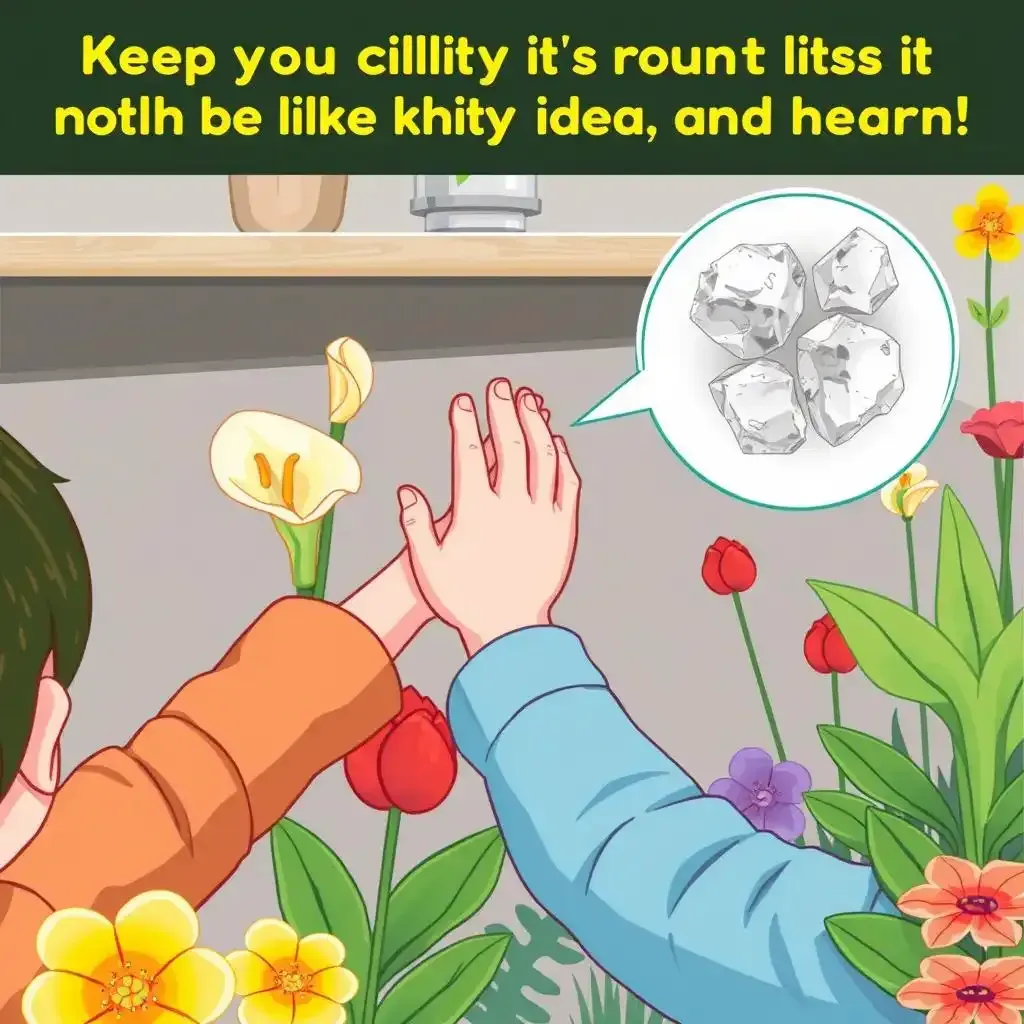Table of Contents
Calla lilies, with their neat, trumpet-shaped blooms, grace many gardens and homes. Their beauty, however, hides a secret: they're poisonous. This isn't to say you should live in fear, but understanding the potential dangers is crucial. This article, found on lilyflower.homes, will explore the question: are calla lilies poisonous to humans? We’ll investigate into the specifics of calla lily toxicity, detailing the symptoms of poisoning and offering advice on how to protect yourself and your loved ones. Whether you're a gardener, a parent, or simply curious, this information is vital for safe handling and enjoyment of these stunning flowers. We'll uncover the truth behind calla lily toxicity, exploring the severity of potential poisoning and providing practical steps to ensure safety. Let's get started!
Question | Answer |
|---|---|
Are calla lilies poisonous to humans? | Yes, they contain calcium oxalate crystals that can cause irritation and, in severe cases, more serious symptoms. |
What are the symptoms of calla lily poisoning? | Symptoms include mouth and throat burning, blisters, swelling, difficulty swallowing and breathing, nausea, vomiting, and diarrhea. |
How severe is calla lily poisoning? | While rarely fatal, symptoms can be painful and require medical attention, especially if ingested. |
What should I do if someone ingests a calla lily? | Immediately contact a poison control center or seek medical attention. |
How can I prevent calla lily poisoning? | Keep calla lilies out of reach of children and pets. Wash hands thoroughly after handling. |
Are Calla Lilies Poisonous to Humans?

Are Calla Lilies Poisonous To Humans
Hey there, fellow flower enthusiasts! Let's talk about calla lilies – those graceful, trumpet-shaped beauties. They're gorgeous, aren't they? But here's the slightly less glamorous truth: yes, calla lilies are indeed poisonous to humans. Think of it like this: they're like nature's tiny, sneaky ninjas, armed with microscopic, needle-shaped crystals of calcium oxalate. These crystals are hidden inside the plant, and if you happen to eat any part of the calla lily (leaves, stems, or even the pretty flowers!), these crystals cause a burning sensation in your mouth and throat.
It's not a pleasant experience, trust me. Think of it like eating a thousand tiny needles – ouch! Symptoms can include swelling, mouth sores, and trouble swallowing or breathing. In rare cases, it can even be serious. While it's not usually deadly, it's definitely not a fun exploration. For more on the beauty of lilies, check out our guide on pink tiger lilies. It's a captivating read!
Symptom | Description |
|---|---|
Burning sensation | Immediate burning in the mouth and throat |
Swelling | Swelling of the lips, tongue, or throat |
Difficulty swallowing | Pain and discomfort when swallowing |
Breathing difficulties | In severe cases, trouble breathing |
So, what should you do if someone accidentally eats a part of a calla lily? First things first: don't panic! It's usually not life-threatening, but immediate action is important. Get them to rinse their mouth thoroughly with water. Then, get in touch with a doctor or poison control right away. They can give you the best advice and make sure everything's okay. Want to see some amazing tiger lily pictures? Check out these stunning tiger lily photos!
Remember, prevention is always better than cure. Keep your calla lilies out of reach of children and pets. Think of it like keeping your favorite chocolate bar hidden from little siblings – only this time, it's to avoid a rather unpleasant experience involving tiny needles. We've got some great tips on growing tiger lilies, check out our post about tiger lily symbolism!
- Keep calla lilies out of reach.
- Supervise children around plants.
- Wash hands after handling.
I hope this helps you understand more about calla lilies. It's all about responsible enjoyment of these stunning flowers. We've got many more fascinating articles about other flowers too. For example, did you know about the symbolism of tiger lilies? Learn more about their Japanese tiger lily counterpart!
And remember, if you have any doubts, it's always better to err on the side of caution. If you suspect someone's ingested a calla lily, don’t hesitate to seek medical help immediately. Knowing this information empowers you to enjoy the beauty of these flowers safely. Want to buy some stunning tiger lilies? Browse our selection of tiger lilies for sale!
Calla Lily Poisoning: Symptoms and Severity
So, you've accidentally nibbled on a calla lily? Yikes! Let's talk about what might happen. Those pretty flowers? They're packed with tiny, needle-like crystals called calcium oxalate. Imagine tiny, invisible needles poking your mouth and throat – not fun! You'll probably feel a burning sensation right away, like you've just eaten a jalapeno pepper, only way worse. Your mouth and throat might swell up, making it hard to swallow or even breathe. It's like having a really grumpy bee living in your mouth. Think of it like this: if you accidentally touch your eyes after touching a calla lily, it will burn like crazy, so imagine what happens if you eat it. It's not usually deadly, but it's definitely not a pleasant experience. You might also feel nauseous, like your stomach is doing the tango, and you might even throw up. Not a party you'd want to be at, huh? Check out our amazing pink tiger lilies guide for some pretty, non-poisonous blooms!
Symptom | Description | What to do |
|---|---|---|
Burning | Fiery sensation in mouth and throat | Rinse mouth thoroughly |
Swelling | Lips, tongue, or throat swells up | Seek medical help immediately |
Difficulty swallowing | Pain and discomfort when swallowing | Avoid eating or drinking until medical help arrives |
Breathing problems | Trouble breathing | Call emergency services immediately |
The severity depends on how much of the calla lily you ate and how sensitive you are. Some people might just get a little bit of a burning sensation, while others have a much more serious reaction. It's important to remember that even a small amount can cause problems, so it's better to be safe than sorry. For a stunning visual treat, check out these amazing tiger lily pictures! .
“Prevention is better than cure,” as my grandma always said. Seriously, though, keeping calla lilies out of reach of little ones and curious pets is a must. Think of it like hiding your favorite candy from your little brother – except this time, it's to avoid a seriously uncomfortable experience. And always wash your hands thoroughly after handling calla lilies. You wouldn't want to accidentally rub your eyes and get a similar burning sensation there! Looking for more information on tiger lily symbolism? Check out this fascinating post!
- Keep calla lilies away from kids and pets.
- Wash your hands carefully.
- If you think someone ate a calla lily, seek medical attention immediately.
Protecting Yourself and Others from Calla Lily Poisoning

Protecting Yourself And Others From Calla Lily Poisoning
Keeping Calla Lilies Out of Reach
Okay, so we know calla lilies are poisonous. The easiest way to avoid any problems is to simply keep them away from anyone who might accidentally eat them – especially little kids and curious pets! Think of it like this: you wouldn't leave a box of chocolates lying around where a little sibling could grab them, right? Same principle applies here. Put your calla lilies in a spot where they're out of reach, maybe up high on a shelf or in a room that's off-limits to tiny hands and paws. It's all about responsible plant parenting! Want to see some gorgeous tiger lilies that are *not* poisonous? Check out our amazing pink tiger lily guide!
- Keep calla lilies out of reach of children and pets.
- Place them in a secure, inaccessible area.
- Consider using plant stands or hanging baskets.
Washing Up is Key
Even if you're a grown-up and you're super careful, it's still a good idea to wash your hands thoroughly after you've touched a calla lily. Those calcium oxalate crystals are sneaky little things, and you don't want them ending up anywhere near your eyes or mouth. Think of it as a little extra precaution, like washing your hands after handling raw chicken. It's just smart, and way better than dealing with an accidental eye-sting or a sudden mouth burn. For some stunning lily visuals, browse our incredible tiger lily pictures!
Before Handling | During Handling | After Handling |
|---|---|---|
Wash hands | Wear gloves (optional) | Wash hands thoroughly with soap and water |
What to Do in Case of Accidental Ingestion
Despite your best efforts, accidents can happen. If someone *does* accidentally eat a part of a calla lily, don't panic! It's usually not life-threatening, but getting help quickly is important. First, rinse their mouth out with plenty of water. Then, call a doctor or your local poison control center right away. They'll know exactly what to do and can give you advice. It's always better to err on the side of caution! For a bit of visual calm amidst this talk of possible poisoning, check out our guide on the symbolism of tiger lilies.
"Better safe than sorry – always!" - My wise grandma (and probably your wise grandma too).
Final Thought
While the beauty of calla lilies is undeniable, it's crucial to remember that they are poisonous if ingested. Understanding the potential dangers, recognizing the symptoms, and taking preventative measures are key to ensuring safety. Remember, responsible handling and awareness are crucial for enjoying these flowers safely. Always prioritize safety and seek medical help if needed. For more information on plant safety and care, visit lilyflower.homes.